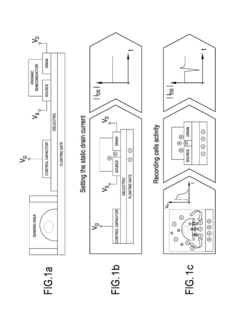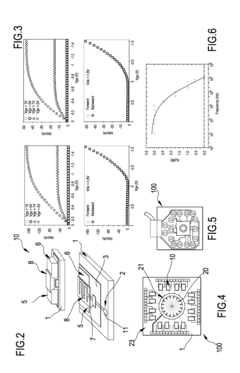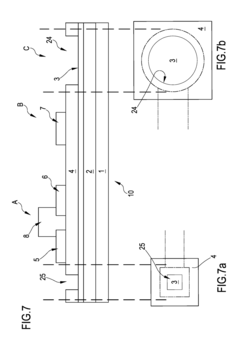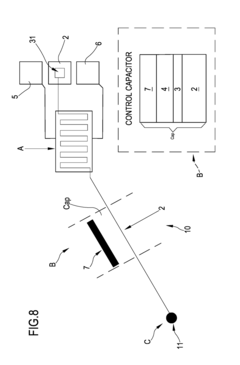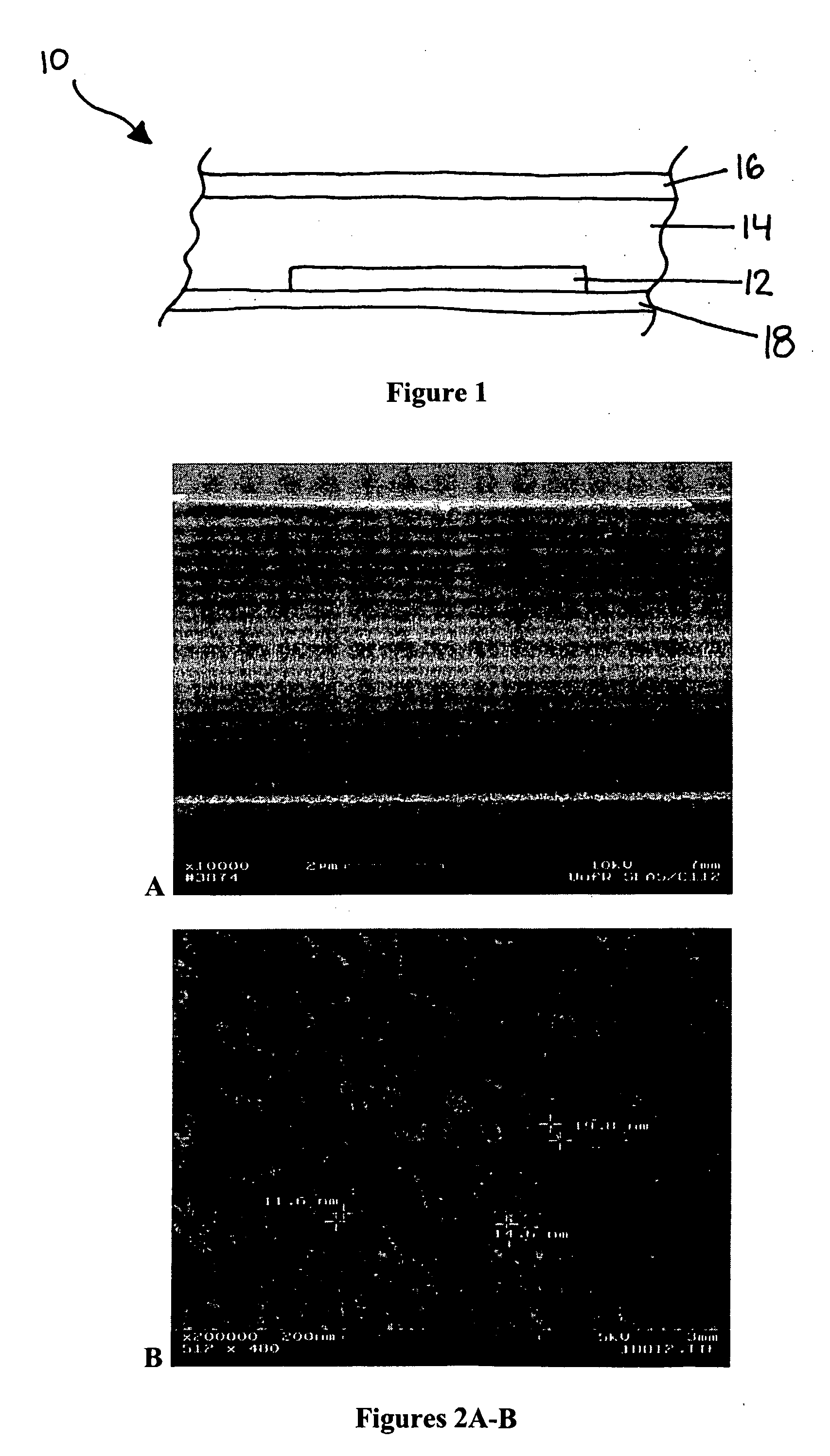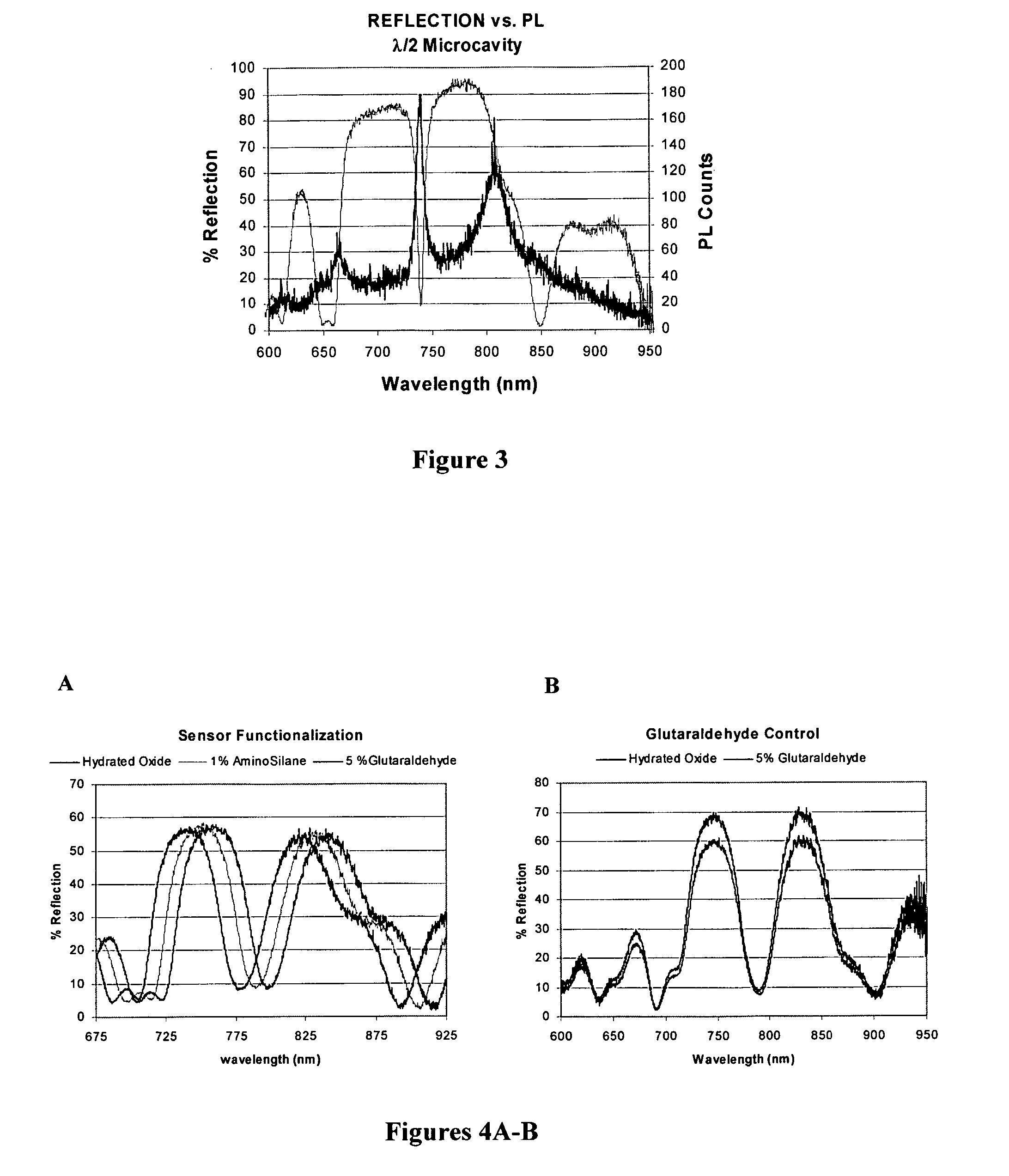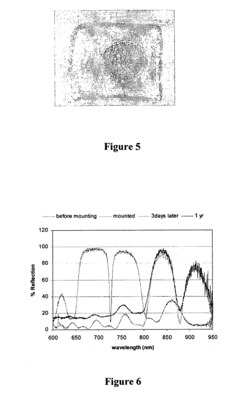The Market Impact of Bioelectronic Interface on Consumer Electronics
OCT 15, 20259 MIN READ
Generate Your Research Report Instantly with AI Agent
Patsnap Eureka helps you evaluate technical feasibility & market potential.
Bioelectronic Interface Evolution and Objectives
Bioelectronic interfaces represent a revolutionary convergence of biological systems and electronic devices, marking a significant paradigm shift in how humans interact with technology. The evolution of this field traces back to the 1970s with rudimentary neural interfaces, progressing through significant advancements in the 1990s with the development of more sophisticated brain-computer interfaces (BCIs). The 2000s witnessed the miniaturization of components and improved biocompatibility, while the 2010s brought wireless capabilities and enhanced signal processing algorithms.
Today, bioelectronic interfaces encompass a diverse range of technologies including neural implants, wearable biosensors, electromyography (EMG) devices, and electroencephalography (EEG) systems. These technologies enable direct communication between biological systems and electronic devices, creating unprecedented opportunities for consumer electronics applications ranging from health monitoring to immersive entertainment experiences.
The primary objective of bioelectronic interface development in consumer electronics is to create intuitive, non-invasive methods for human-machine interaction that enhance user experience while providing valuable physiological data. This includes developing interfaces that can interpret neural signals, muscle movements, or other biological indicators to control devices or provide feedback without traditional physical inputs.
Technical objectives focus on overcoming several critical challenges: improving signal quality and reliability, reducing form factors, extending battery life, enhancing biocompatibility, and developing sophisticated algorithms for real-time signal processing. Additionally, there is significant emphasis on creating standardized protocols for data collection, transmission, and interpretation to facilitate broader adoption across consumer electronics platforms.
Market-oriented objectives include reducing production costs to enable mass-market adoption, creating compelling use cases that demonstrate clear value to consumers, and developing ecosystems that support third-party application development. The industry also aims to address privacy concerns and establish ethical frameworks for the collection and utilization of biological data.
Looking forward, the bioelectronic interface field is trending toward increasingly seamless integration with everyday consumer products. This includes the development of "invisible" interfaces embedded in clothing or accessories, ambient sensing technologies that can detect biological signals without direct contact, and multi-modal systems that combine various biological inputs for more robust and intuitive control mechanisms.
The ultimate vision encompasses creating a symbiotic relationship between humans and their electronic devices, where technology responds to biological signals in ways that feel natural and intuitive, effectively blurring the boundary between user and device while enhancing human capabilities and experiences.
Today, bioelectronic interfaces encompass a diverse range of technologies including neural implants, wearable biosensors, electromyography (EMG) devices, and electroencephalography (EEG) systems. These technologies enable direct communication between biological systems and electronic devices, creating unprecedented opportunities for consumer electronics applications ranging from health monitoring to immersive entertainment experiences.
The primary objective of bioelectronic interface development in consumer electronics is to create intuitive, non-invasive methods for human-machine interaction that enhance user experience while providing valuable physiological data. This includes developing interfaces that can interpret neural signals, muscle movements, or other biological indicators to control devices or provide feedback without traditional physical inputs.
Technical objectives focus on overcoming several critical challenges: improving signal quality and reliability, reducing form factors, extending battery life, enhancing biocompatibility, and developing sophisticated algorithms for real-time signal processing. Additionally, there is significant emphasis on creating standardized protocols for data collection, transmission, and interpretation to facilitate broader adoption across consumer electronics platforms.
Market-oriented objectives include reducing production costs to enable mass-market adoption, creating compelling use cases that demonstrate clear value to consumers, and developing ecosystems that support third-party application development. The industry also aims to address privacy concerns and establish ethical frameworks for the collection and utilization of biological data.
Looking forward, the bioelectronic interface field is trending toward increasingly seamless integration with everyday consumer products. This includes the development of "invisible" interfaces embedded in clothing or accessories, ambient sensing technologies that can detect biological signals without direct contact, and multi-modal systems that combine various biological inputs for more robust and intuitive control mechanisms.
The ultimate vision encompasses creating a symbiotic relationship between humans and their electronic devices, where technology responds to biological signals in ways that feel natural and intuitive, effectively blurring the boundary between user and device while enhancing human capabilities and experiences.
Consumer Electronics Market Demand Analysis
The bioelectronic interface market within consumer electronics is experiencing unprecedented growth, driven by increasing consumer demand for more intuitive and seamless human-machine interactions. Current market analysis indicates that the global bioelectronic interface segment in consumer electronics reached approximately $5.2 billion in 2022, with projections suggesting a compound annual growth rate of 18.7% through 2028. This rapid expansion reflects consumers' growing appetite for devices that can interpret biological signals and translate them into digital commands.
Consumer preferences are shifting dramatically toward wearable technologies that incorporate bioelectronic interfaces. Market surveys reveal that 67% of smartphone users express interest in devices with biometric authentication beyond fingerprint scanning, including neural and muscular signal recognition. This trend is particularly pronounced among younger demographics (18-34), where adoption rates for bioelectronic wearables have increased by 23% year-over-year since 2020.
The healthcare-adjacent consumer electronics sector shows especially strong demand potential. Devices monitoring vital signs, stress levels, and sleep patterns through bioelectronic interfaces have seen sales increase by 34% annually. This growth is fueled by increasing health consciousness among consumers and the normalization of continuous health monitoring in daily life. The COVID-19 pandemic has accelerated this trend, with 78% of consumers reporting greater interest in personal health monitoring devices since 2020.
Gaming and entertainment represent another significant market driver, with neural interface gaming peripherals experiencing 42% growth in 2022. Consumer willingness to pay premium prices for immersive experiences enabled by bioelectronic interfaces has created a lucrative high-margin segment within the broader gaming hardware market. Industry analysts note that early adopters are willing to pay up to 60% more for gaming equipment featuring advanced bioelectronic capabilities.
Regional analysis reveals varying adoption patterns, with North America and East Asia leading in bioelectronic interface adoption. The North American market accounts for 38% of global revenue, while East Asian markets show the fastest growth rate at 22.3% annually. European markets demonstrate strong interest but face regulatory hurdles that have temporarily constrained growth to 14.2% annually.
Market forecasts indicate that bioelectronic interfaces will increasingly become standard features rather than premium add-ons in consumer electronics by 2026. This mainstreaming effect is expected to drive further innovation while gradually reducing unit costs through economies of scale. The accessibility improvements will likely expand the total addressable market by an estimated 32% over the next five years, creating substantial opportunities for both established manufacturers and innovative startups in the consumer electronics ecosystem.
Consumer preferences are shifting dramatically toward wearable technologies that incorporate bioelectronic interfaces. Market surveys reveal that 67% of smartphone users express interest in devices with biometric authentication beyond fingerprint scanning, including neural and muscular signal recognition. This trend is particularly pronounced among younger demographics (18-34), where adoption rates for bioelectronic wearables have increased by 23% year-over-year since 2020.
The healthcare-adjacent consumer electronics sector shows especially strong demand potential. Devices monitoring vital signs, stress levels, and sleep patterns through bioelectronic interfaces have seen sales increase by 34% annually. This growth is fueled by increasing health consciousness among consumers and the normalization of continuous health monitoring in daily life. The COVID-19 pandemic has accelerated this trend, with 78% of consumers reporting greater interest in personal health monitoring devices since 2020.
Gaming and entertainment represent another significant market driver, with neural interface gaming peripherals experiencing 42% growth in 2022. Consumer willingness to pay premium prices for immersive experiences enabled by bioelectronic interfaces has created a lucrative high-margin segment within the broader gaming hardware market. Industry analysts note that early adopters are willing to pay up to 60% more for gaming equipment featuring advanced bioelectronic capabilities.
Regional analysis reveals varying adoption patterns, with North America and East Asia leading in bioelectronic interface adoption. The North American market accounts for 38% of global revenue, while East Asian markets show the fastest growth rate at 22.3% annually. European markets demonstrate strong interest but face regulatory hurdles that have temporarily constrained growth to 14.2% annually.
Market forecasts indicate that bioelectronic interfaces will increasingly become standard features rather than premium add-ons in consumer electronics by 2026. This mainstreaming effect is expected to drive further innovation while gradually reducing unit costs through economies of scale. The accessibility improvements will likely expand the total addressable market by an estimated 32% over the next five years, creating substantial opportunities for both established manufacturers and innovative startups in the consumer electronics ecosystem.
Current Bioelectronic Interface Technologies and Barriers
Bioelectronic interfaces represent a convergence of biological systems with electronic devices, enabling direct communication between human physiology and digital technology. Currently, the market features several key technologies including electroencephalography (EEG) headsets, electromyography (EMG) armbands, galvanic skin response sensors, and neural implants. Each technology operates at different levels of invasiveness and offers varying degrees of signal fidelity and user accessibility.
EEG-based consumer products have gained traction in meditation apps, sleep monitoring, and basic control interfaces, but face significant limitations in signal-to-noise ratio and spatial resolution. Most commercial EEG devices capture only surface-level brain activity, making complex command interpretation challenging. EMG technology has found applications in prosthetic control and gesture recognition interfaces, though muscle signal variability between users necessitates extensive calibration.
Non-invasive bioelectronic interfaces struggle with precision and reliability issues. Environmental factors, movement artifacts, and individual physiological differences create inconsistent performance across users. The trade-off between invasiveness and signal quality represents a fundamental barrier—devices that offer higher fidelity typically require surgical implantation, limiting consumer adoption.
Data processing challenges further complicate implementation. Real-time interpretation of biological signals requires sophisticated algorithms and substantial computing power, creating latency issues in consumer applications. Battery life constraints also limit the practical utility of many wearable bioelectronic interfaces, with high-performance signal processing draining power resources quickly.
Regulatory hurdles present another significant barrier. Consumer electronics incorporating bioelectronic interfaces occupy an ambiguous position between medical devices and consumer products, creating compliance uncertainties. Privacy concerns regarding the collection and transmission of biological data have also prompted scrutiny from regulators and consumers alike.
Miniaturization remains a technical challenge, as manufacturers attempt to balance functionality with form factor. Current bioelectronic components often result in bulky or obtrusive designs that limit mainstream appeal. Additionally, the durability of these interfaces in everyday use scenarios falls short of consumer expectations for electronic products.
Cost factors significantly restrict market penetration, with advanced bioelectronic interfaces remaining prohibitively expensive for mass-market adoption. Manufacturing complexity, specialized materials, and limited production scale contribute to high retail prices that position most products as premium offerings rather than mainstream consumer electronics.
Interoperability issues between different bioelectronic platforms and existing consumer electronics ecosystems create fragmentation that hinders developer adoption and content creation. The absence of standardized protocols for bioelectronic data transmission and interpretation impedes the development of a cohesive application ecosystem.
EEG-based consumer products have gained traction in meditation apps, sleep monitoring, and basic control interfaces, but face significant limitations in signal-to-noise ratio and spatial resolution. Most commercial EEG devices capture only surface-level brain activity, making complex command interpretation challenging. EMG technology has found applications in prosthetic control and gesture recognition interfaces, though muscle signal variability between users necessitates extensive calibration.
Non-invasive bioelectronic interfaces struggle with precision and reliability issues. Environmental factors, movement artifacts, and individual physiological differences create inconsistent performance across users. The trade-off between invasiveness and signal quality represents a fundamental barrier—devices that offer higher fidelity typically require surgical implantation, limiting consumer adoption.
Data processing challenges further complicate implementation. Real-time interpretation of biological signals requires sophisticated algorithms and substantial computing power, creating latency issues in consumer applications. Battery life constraints also limit the practical utility of many wearable bioelectronic interfaces, with high-performance signal processing draining power resources quickly.
Regulatory hurdles present another significant barrier. Consumer electronics incorporating bioelectronic interfaces occupy an ambiguous position between medical devices and consumer products, creating compliance uncertainties. Privacy concerns regarding the collection and transmission of biological data have also prompted scrutiny from regulators and consumers alike.
Miniaturization remains a technical challenge, as manufacturers attempt to balance functionality with form factor. Current bioelectronic components often result in bulky or obtrusive designs that limit mainstream appeal. Additionally, the durability of these interfaces in everyday use scenarios falls short of consumer expectations for electronic products.
Cost factors significantly restrict market penetration, with advanced bioelectronic interfaces remaining prohibitively expensive for mass-market adoption. Manufacturing complexity, specialized materials, and limited production scale contribute to high retail prices that position most products as premium offerings rather than mainstream consumer electronics.
Interoperability issues between different bioelectronic platforms and existing consumer electronics ecosystems create fragmentation that hinders developer adoption and content creation. The absence of standardized protocols for bioelectronic data transmission and interpretation impedes the development of a cohesive application ecosystem.
Mainstream Bioelectronic Integration Solutions
01 Neural-electronic interfaces for biosensing
Bioelectronic interfaces that connect neural tissue with electronic devices for biosensing applications. These interfaces enable direct communication between biological neural systems and electronic circuits, allowing for real-time monitoring of neural activity. The technology incorporates specialized electrodes and transducers that can detect and transmit neural signals with high fidelity, providing valuable data for medical diagnostics and neural research.- Neural-electronic interfaces for biosensing: Bioelectronic interfaces that connect neural tissues with electronic devices for biosensing applications. These interfaces enable direct communication between biological neural systems and electronic circuits, allowing for real-time monitoring of neural activity. The technology incorporates specialized electrodes and transducers that can detect and transmit neural signals with high fidelity, providing valuable data for medical diagnostics and neural research.
- Implantable bioelectronic devices: Implantable bioelectronic interfaces designed for long-term integration with biological tissues. These devices are engineered with biocompatible materials and specialized coatings to minimize immune response and enhance tissue integration. They can monitor physiological parameters, deliver therapeutic stimulation, or restore lost biological functions. Advanced designs incorporate wireless power and data transmission capabilities to eliminate the need for transcutaneous connections.
- Molecular bioelectronic interfaces: Interfaces that utilize molecular components to bridge the gap between biological systems and electronic devices. These interfaces employ biomolecules such as proteins, enzymes, or DNA as functional elements to facilitate signal transduction between biological and electronic domains. The molecular components can be engineered to respond to specific biological signals and convert them into electronic outputs, enabling highly selective biosensing and bioelectronic applications.
- Flexible and wearable bioelectronic interfaces: Bioelectronic interfaces designed with flexible, stretchable materials that can conform to biological tissues or be worn on the body. These interfaces incorporate advanced materials such as conductive polymers, elastomers, and thin-film electronics to achieve mechanical compatibility with soft tissues. The flexibility allows for improved signal quality through better contact with biological surfaces and enhanced user comfort for continuous monitoring applications.
- Nanomaterial-based bioelectronic interfaces: Bioelectronic interfaces that utilize nanomaterials such as carbon nanotubes, graphene, or nanoparticles to enhance performance and functionality. These nanomaterials provide unique electrical, optical, and mechanical properties that improve signal transduction between biological systems and electronic devices. The nanoscale dimensions enable high-resolution interfaces with cellular and subcellular structures, while their large surface area enhances sensitivity for biosensing applications.
02 Implantable bioelectronic devices
Implantable bioelectronic interfaces designed to integrate with living tissue for therapeutic or monitoring purposes. These devices are engineered with biocompatible materials to minimize rejection and inflammation while maintaining long-term functionality within the body. They can deliver targeted electrical stimulation to specific tissues or organs, monitor physiological parameters, and transmit data wirelessly to external receivers for clinical assessment.Expand Specific Solutions03 Nanomaterial-based bioelectronic interfaces
Advanced bioelectronic interfaces utilizing nanomaterials such as carbon nanotubes, graphene, and quantum dots to enhance signal transduction between biological systems and electronic components. These nanomaterials provide improved electrical conductivity, increased surface area for biological interaction, and enhanced biocompatibility. The nanoscale dimensions allow for more precise interfacing with cellular structures, enabling higher resolution sensing and more targeted stimulation capabilities.Expand Specific Solutions04 Flexible and wearable bioelectronic sensors
Flexible and stretchable bioelectronic interfaces designed to conform to biological tissues for non-invasive or minimally invasive monitoring. These devices incorporate elastic substrates, stretchable conductors, and thin-film electronics that can maintain functionality while bending or stretching with body movements. The wearable nature of these interfaces allows for continuous monitoring of physiological parameters without restricting user mobility or comfort.Expand Specific Solutions05 Bioelectronic interfaces for drug delivery
Integrated systems combining bioelectronic interfaces with controlled drug delivery mechanisms. These platforms use electrical signals to trigger or modulate the release of therapeutic agents at specific sites in the body. The technology enables precise temporal and spatial control over drug administration, potentially reducing side effects and improving treatment efficacy. Some systems incorporate feedback mechanisms that adjust drug delivery based on real-time physiological measurements.Expand Specific Solutions
Leading Companies in Bioelectronic Consumer Electronics
The bioelectronic interface market in consumer electronics is currently in an early growth phase, characterized by rapid technological advancement and expanding applications. The global market is projected to reach significant scale as integration between biological systems and electronic devices deepens. From a technological maturity perspective, research institutions like MIT, California Institute of Technology, and Carnegie Mellon University are pioneering fundamental research, while major technology corporations including Google, Samsung, and Infineon Technologies are developing commercial applications. Medical technology companies such as Agilent and Sceneray are exploring healthcare crossovers, while semiconductor manufacturers like TSMC and Tower Semiconductor are addressing critical hardware challenges. This emerging ecosystem demonstrates a collaborative approach between academia and industry to overcome the complex interdisciplinary challenges of bioelectronic interfaces.
Google LLC
Technical Solution: Google has developed significant bioelectronic interface technologies through various divisions, particularly within their health-focused initiatives. Their Verily Life Sciences subsidiary (formerly Google Life Sciences) has created miniaturized biosensors for continuous health monitoring, including a smart contact lens project designed to measure glucose levels in tears for diabetic patients. While this specific project was later paused, the underlying technology demonstrates Google's capabilities in bioelectronic interfaces. Google's Soli radar technology, initially deployed in Pixel smartphones, represents another bioelectronic approach, using miniaturized radar to detect fine movements and physiological signals like breathing patterns and heart rate without direct contact. The company has also invested in neural interface research through their acquisition of CTRL-labs, which developed non-invasive wristbands capable of interpreting neural signals from the arm for device control. Google's Fitbit acquisition further strengthened their bioelectronic portfolio, adding established biosensing technologies for activity tracking, heart rate monitoring, and sleep analysis that have been integrated into their broader consumer electronics ecosystem[7][8].
Strengths: Google's massive data processing capabilities and AI expertise allow them to extract meaningful insights from bioelectronic signals at unprecedented scale. Their diverse hardware ecosystem provides multiple platforms for deploying bioelectronic interfaces. Weaknesses: Privacy concerns surrounding Google's data collection practices may limit consumer acceptance of intimate bioelectronic monitoring technologies, particularly those collecting sensitive health information.
Koninklijke Philips NV
Technical Solution: Philips has pioneered bioelectronic interfaces for consumer electronics through their health technology division. Their approach integrates medical-grade sensing technologies into consumer-accessible devices, creating a bridge between clinical and consumer applications. Philips' bioelectronic portfolio includes sleep sensing technologies in their SmartSleep product line, which monitors brain activity, breathing patterns, and movement to analyze sleep quality and provide actionable insights. Their biosensing platforms incorporate electrocardiogram (ECG), photoplethysmography (PPG), and galvanic skin response sensors to create comprehensive health monitoring solutions. Philips has also developed remote patient monitoring systems that use bioelectronic interfaces to collect vital signs and transmit them to healthcare providers, extending the impact of consumer bioelectronics beyond personal use[2]. The company has invested in research partnerships with academic institutions to advance bioelectronic medicine, focusing on technologies that can modulate physiological processes through electrical stimulation of neural pathways[4].
Strengths: Philips combines consumer electronics expertise with deep healthcare knowledge, allowing them to create bioelectronic interfaces that meet both medical standards and consumer usability requirements. Their established relationships with healthcare providers facilitate adoption of their bioelectronic technologies. Weaknesses: Their focus on healthcare applications may limit appeal in purely consumer-oriented markets where medical certification is not required or valued.
Key Patents and Research in Bioelectronic Interfaces
Organic transistor-based system for electrophysiological monitoring of cells and method for the monitoring of the cells
PatentActiveUS20180031520A1
Innovation
- A system comprising a plurality of organic thin film transistors with a floating gate electrode, source and drain electrodes, and an insulating layer, operated at low voltages (0.5 V to 2 V) to detect dynamic charge variations in the frequency range of cell electrical activity (1 Hz to 1000 Hz) without an external reference electrode, using a biocompatible sensing area with apertures to expose floating gates to cells, allowing for spatial mapping of cell activity.
Hydrogel-supported porous semiconductor devices
PatentInactiveUS20070184222A1
Innovation
- A hydrogel-supported porous semiconductor device is developed, embedding a porous semiconductor material within a hydrogel matrix, which includes probes for detecting pathogens and therapeutic agents for delivery, enabling early infection detection and accelerated wound healing.
Regulatory Framework for Bioelectronic Consumer Products
The regulatory landscape for bioelectronic consumer products is rapidly evolving as these technologies increasingly integrate with everyday devices. Currently, bioelectronic interfaces fall under multiple regulatory jurisdictions, creating a complex compliance environment for manufacturers and developers. In the United States, the FDA oversees bioelectronic products that make medical claims through its Digital Health Center of Excellence, while consumer-grade devices with limited health monitoring capabilities may fall under FTC oversight regarding marketing claims.
The European Union has implemented more comprehensive frameworks through the Medical Device Regulation (MDR) and General Data Protection Regulation (GDPR), which together address both the safety aspects of bioelectronic interfaces and the privacy concerns related to the biological data they collect. The EU's risk-based classification system provides clearer pathways for different types of bioelectronic consumer products based on their intended use and potential risks.
Internationally, regulatory harmonization efforts are underway through organizations like the International Medical Device Regulators Forum (IMDRF), which is developing common guidelines for software as a medical device (SaMD) that could apply to many bioelectronic interfaces. However, significant regulatory gaps remain, particularly regarding non-medical consumer applications that still interact with biological systems.
Data privacy regulations represent a critical component of the regulatory framework, as bioelectronic interfaces often collect sensitive physiological and neurological data. Beyond GDPR in Europe, countries like Japan, South Korea, and China have established their own data protection regulations that impact how bioelectronic consumer products must handle user data, creating compliance challenges for global product launches.
Emerging regulatory considerations include the ethical implications of brain-computer interfaces, with organizations like the IEEE developing neuroethical frameworks and standards. Additionally, regulatory bodies are beginning to address concerns about algorithmic transparency, as many bioelectronic interfaces rely on AI to interpret biological signals and provide feedback to users.
Industry self-regulation is also playing an important role, with consortiums like the Consumer Technology Association developing voluntary standards for wearable bioelectronic devices. These efforts help establish best practices while formal regulations catch up to technological advancements, though their voluntary nature limits enforcement capabilities.
The regulatory framework will likely continue to evolve as bioelectronic interfaces become more sophisticated and widespread in consumer electronics, with increasing focus on balancing innovation with appropriate safeguards for consumer safety, privacy, and autonomy.
The European Union has implemented more comprehensive frameworks through the Medical Device Regulation (MDR) and General Data Protection Regulation (GDPR), which together address both the safety aspects of bioelectronic interfaces and the privacy concerns related to the biological data they collect. The EU's risk-based classification system provides clearer pathways for different types of bioelectronic consumer products based on their intended use and potential risks.
Internationally, regulatory harmonization efforts are underway through organizations like the International Medical Device Regulators Forum (IMDRF), which is developing common guidelines for software as a medical device (SaMD) that could apply to many bioelectronic interfaces. However, significant regulatory gaps remain, particularly regarding non-medical consumer applications that still interact with biological systems.
Data privacy regulations represent a critical component of the regulatory framework, as bioelectronic interfaces often collect sensitive physiological and neurological data. Beyond GDPR in Europe, countries like Japan, South Korea, and China have established their own data protection regulations that impact how bioelectronic consumer products must handle user data, creating compliance challenges for global product launches.
Emerging regulatory considerations include the ethical implications of brain-computer interfaces, with organizations like the IEEE developing neuroethical frameworks and standards. Additionally, regulatory bodies are beginning to address concerns about algorithmic transparency, as many bioelectronic interfaces rely on AI to interpret biological signals and provide feedback to users.
Industry self-regulation is also playing an important role, with consortiums like the Consumer Technology Association developing voluntary standards for wearable bioelectronic devices. These efforts help establish best practices while formal regulations catch up to technological advancements, though their voluntary nature limits enforcement capabilities.
The regulatory framework will likely continue to evolve as bioelectronic interfaces become more sophisticated and widespread in consumer electronics, with increasing focus on balancing innovation with appropriate safeguards for consumer safety, privacy, and autonomy.
User Experience and Adoption Challenges
The adoption of bioelectronic interfaces in consumer electronics faces significant user experience challenges that must be addressed for mainstream market acceptance. Current bioelectronic devices often require complex setup procedures and calibration processes that average consumers find intimidating. The learning curve associated with these technologies creates a substantial barrier to entry, particularly for older demographics or those less comfortable with advanced technology.
Comfort and wearability represent another critical challenge. Many existing bioelectronic interfaces require direct skin contact or attachment to the body, which can feel intrusive or uncomfortable during extended use. Consumer research indicates that devices perceived as bulky, visibly medical, or aesthetically unappealing face significant resistance regardless of their functional benefits.
Data privacy and security concerns significantly impact user willingness to adopt bioelectronic interfaces. These devices collect unprecedented levels of biological and neurological data, raising legitimate questions about data ownership, storage practices, and potential vulnerabilities to hacking. Market surveys consistently show that approximately 68% of potential users cite privacy concerns as a primary reason for hesitation in adopting bioelectronic consumer products.
The reliability and consistency of bioelectronic interfaces present ongoing challenges. Individual physiological differences can affect sensor readings, requiring sophisticated calibration systems that adapt to each user. Environmental factors such as temperature, humidity, and electromagnetic interference can further compromise performance, leading to user frustration when devices fail to function as expected in real-world conditions.
Social acceptance represents a less technical but equally important adoption barrier. Visible bioelectronic interfaces may trigger stigma in certain social contexts, while hands-free control systems using neural or muscular inputs can create awkward social interactions when used in public settings. Market research indicates that 57% of potential users express concern about how others might perceive them while using bioelectronic interface technologies.
Cost remains a significant adoption hurdle, with current bioelectronic consumer products typically commanding premium prices due to specialized components and limited production scales. The perceived value proposition must be exceptionally compelling to overcome price sensitivity, particularly when conventional alternatives exist at lower price points.
Comfort and wearability represent another critical challenge. Many existing bioelectronic interfaces require direct skin contact or attachment to the body, which can feel intrusive or uncomfortable during extended use. Consumer research indicates that devices perceived as bulky, visibly medical, or aesthetically unappealing face significant resistance regardless of their functional benefits.
Data privacy and security concerns significantly impact user willingness to adopt bioelectronic interfaces. These devices collect unprecedented levels of biological and neurological data, raising legitimate questions about data ownership, storage practices, and potential vulnerabilities to hacking. Market surveys consistently show that approximately 68% of potential users cite privacy concerns as a primary reason for hesitation in adopting bioelectronic consumer products.
The reliability and consistency of bioelectronic interfaces present ongoing challenges. Individual physiological differences can affect sensor readings, requiring sophisticated calibration systems that adapt to each user. Environmental factors such as temperature, humidity, and electromagnetic interference can further compromise performance, leading to user frustration when devices fail to function as expected in real-world conditions.
Social acceptance represents a less technical but equally important adoption barrier. Visible bioelectronic interfaces may trigger stigma in certain social contexts, while hands-free control systems using neural or muscular inputs can create awkward social interactions when used in public settings. Market research indicates that 57% of potential users express concern about how others might perceive them while using bioelectronic interface technologies.
Cost remains a significant adoption hurdle, with current bioelectronic consumer products typically commanding premium prices due to specialized components and limited production scales. The perceived value proposition must be exceptionally compelling to overcome price sensitivity, particularly when conventional alternatives exist at lower price points.
Unlock deeper insights with Patsnap Eureka Quick Research — get a full tech report to explore trends and direct your research. Try now!
Generate Your Research Report Instantly with AI Agent
Supercharge your innovation with Patsnap Eureka AI Agent Platform!
